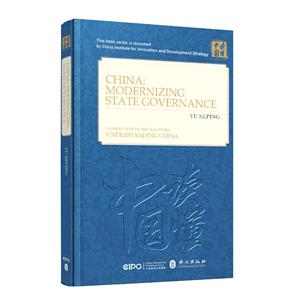Introduction
Modernizing State Governance
Part I Basic Systems
Chapter I How the CPC Leads
Characteristics of China's Political Party System
Formation of China's Political Party System
Functions of the Chinese Political Party System
Future Prospect of Party Politics in China
Chapter 2 How the Organs of State Power Operate
Main Characteristics of the System of People's Congresses
Historical Evolution of the System of People's Congresses
Basic Functions of the System of People's Congresses
Prospects for the Future Development of People's Congresses
Chapter 3 How Multiparty Consultation Is Conducted
Political Consultation System
Establishment of the CPPCC
Reform and Opening Up, and Political Consultation
Future Reform of the Political Consultation System
Chapter 4 How Laws Are Made
Changes of the Legislative System
Legislative Institutions and Legislative Principles
Legislative Process
Legislative Oversight
Future Reform of the Legislative System
Chapter 5 How the Government Operates
Reform of the Administrative System
Central People's Government
Local Government
Administrative Procedures 62,
Future Reform of the Administrative System
Chapter 6 How Judicial Coordination Is Carried Out
Evolution of the Judicial System
Trial System
Procuratorial System
Arbitration, Mediation, and Lawyer Systems
Characteristics of China's Judicial System
Chapter 7 How Society Is Autonomously Governed
Regional Ethnic Autonomy
Self-governance by Rural Residents
Self-governance by Urban Residents
Autonomy of Special Administrative Regions
Characteristics of China's Autonomy System
Further Improvement of the Autonomy System
Chapter 8 How the Nation Is Defended
National Defense System and Its Changes
Armed Forces
National Defense Mobilization
Characteristics of China's Defense System
Part II Governance Strategies
Chapter I Election by the People
Development of Election in Exploration
Chinese-style Elections
Major Types of Democratic Elections
Meaning of Electoral Democracy
Future Prospects for Democratic Elections in China
Chapter 2 From Rule of Man to Rule of Law
The Path to the Rule of Law
Major Rule of Law Measures
Achievements and Functions of Rule of Law
Development of Rule of Law and Challenges
Chapter 3 Participate in Political Activities in an Orderly Manner
Significance of Political Participation
Major Methods of Political Participation
Development of Political Participation
Achievements of Political Participation
Characteristics of Political Participation
Chapter 4 Make Decision-making More Rational and
Democratic
Characteristics of China's Decision-making System
Decision-making in Modern China
Reform of the Decision-making System
Chapter 5 Make the Government More Responsible
Government Responsibilities and Responsible Government
From Strengthening Government Responsibilities to Building a Responsible Government
Building a Responsible Government is Essential
Characteristics and Prospects of Building a Responsible Government
Chapter 6 Make the Government Provide Better Services
From Regulating to Providing Services
Developing Service-oriented Government
Success Stories of Building a Service-oriented Government
Promoting a Service-oriented Government: Difficulties and Prospects
Chapter 7 Make Public Affairs More Transparent
Political Transparency and Democratic Governance
Reform and Opening Up, and Political Transparency
Political Transparency and Political Development
Challenges and Prospects for Political Transparency
Chapter 8 Place Power Under Effective Scrutiny
Significance of Power Supervision
Power Supervision in Modern China
Features of Power Supervision in China
Further Improvement of the Power Supervision System
Conclusion
Journey towards Effective Government and Good Governance
References
Epilogue




















